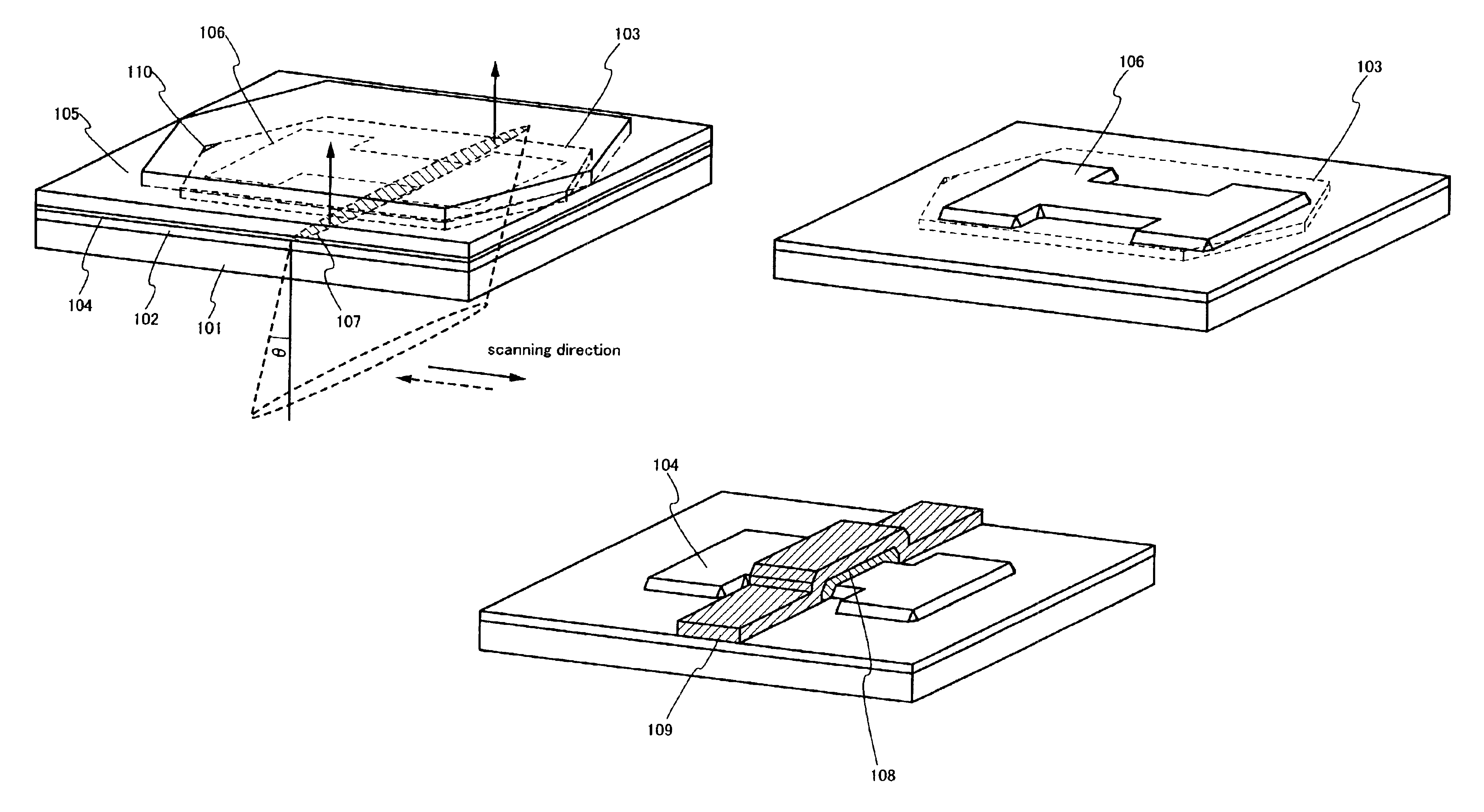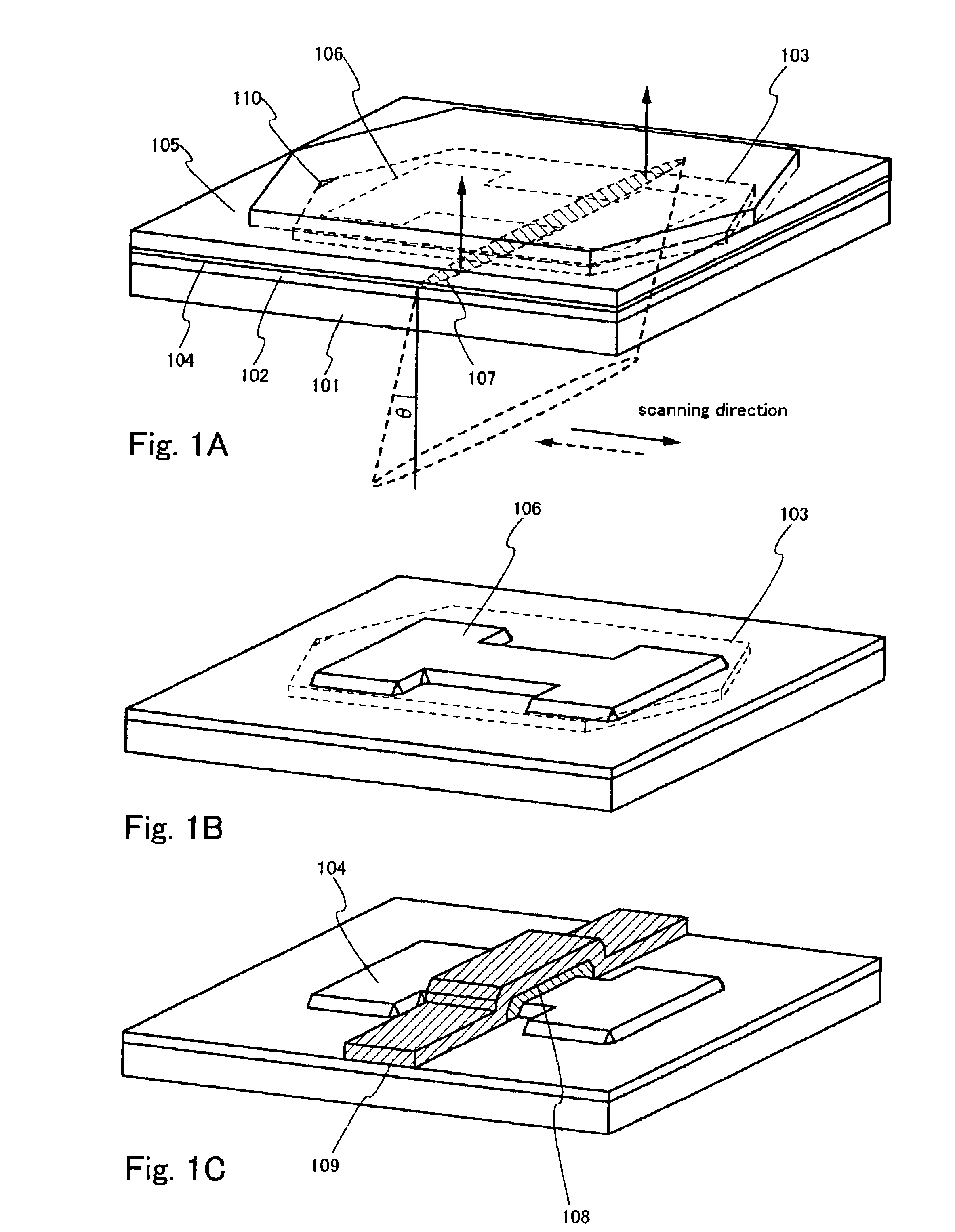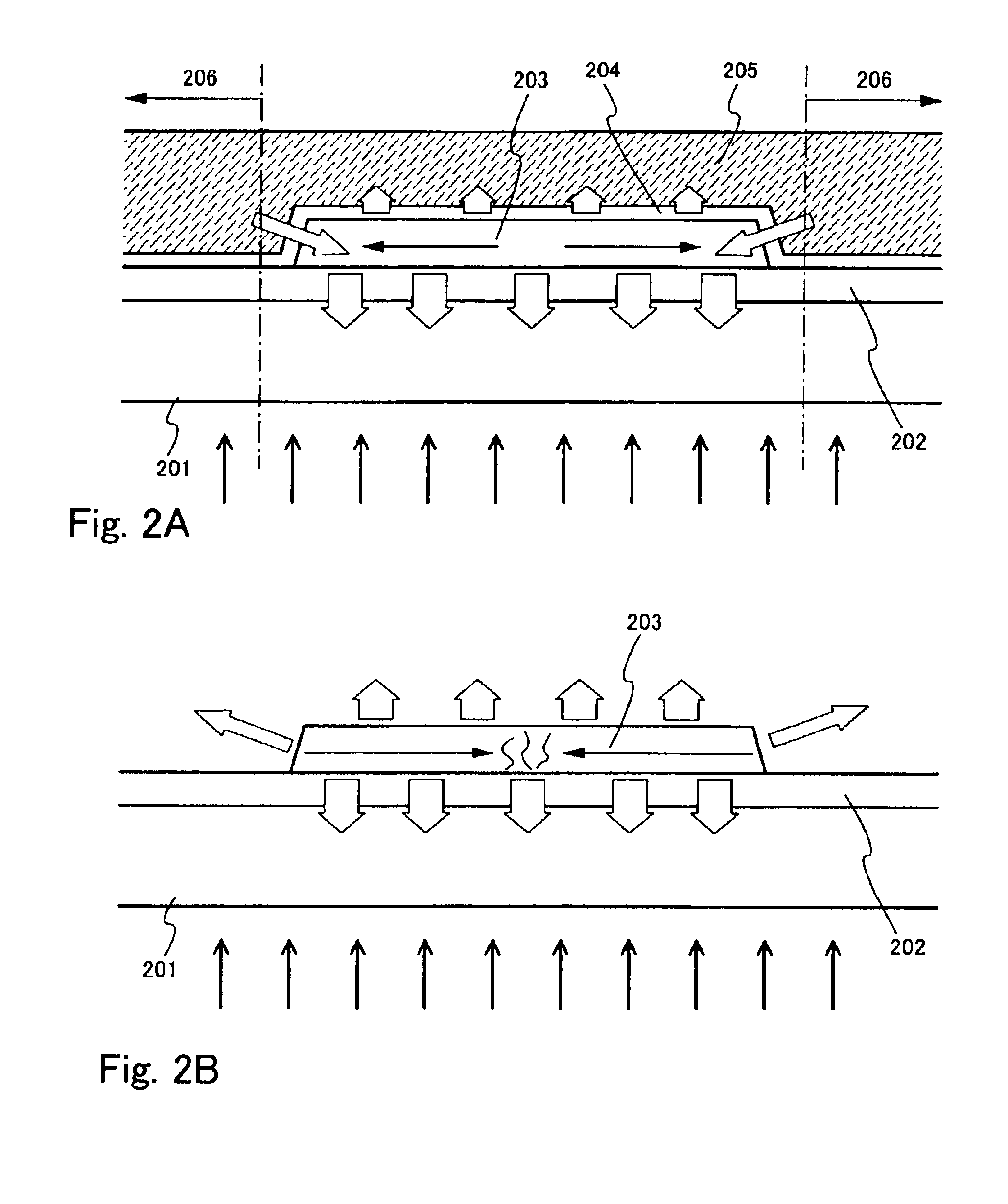Method of manufacturing a semiconductor device by crystallization of a semiconductor region by use of a continuous wave laser beam through the substrate
a technology of semiconductor devices and crystallization, which is applied in the direction of semiconductor devices, instruments, electrical equipment, etc., can solve the problems of poor crystal quality, difficult uniform irradiation of laser beams, and dislocation in grain boundaries, etc., and achieve the crystallization characteristics of the first semiconductor region.
- Summary
- Abstract
- Description
- Claims
- Application Information
AI Technical Summary
Benefits of technology
Problems solved by technology
Method used
Image
Examples
embodiment 1
[0102]The embodiment 1 is that fixed resist pattern is formed by photo-engraving in an amorphous silicon film formed on a substrate, a first semiconductor region is formed by etching treatment, a barrier film and a heat retaining film are formed over the first semiconductor region, and the first semiconductor region is crystallized by irradiation of a continuous wave laser beam from the substrate side.
[0103]In FIGS. 10A and 10B, on a glass plate 401 made of aluminosilicate glass, a barrier film 402 is formed of a silicon nitride-oxide film of 100 nm in thickness. A first semiconductor region 403 on the barrier film 402 is a 100 nm thick amorphous silicon film formed by a plasma CVD technique. Top and side surfaces of the first semiconductor region 403 are covered with a 200 nm thick silicon oxide film as a barrier film 404, and the silicon oxide film is covered with a 200 nm thick amorphous silicon film as a heat retaining film 405. FIG. 10A is a top view of the first semiconductor ...
embodiment 2
[0114]The scanning of the laser beam in the embodiment 1 may be scanned not only in one direction but also back-and-forth strokes. In this case, the seed regions 406a and 406b may be provided at both sides of the first semiconductor region 403 as shown in the embodiment of FIGS. 13A and 13B. In case of back-and-forth strokes, laser energy density is changed every stroke so that the crystal growth can be phased. The scanning of the laser beam also serves for hydrogen extraction treatment which is often required in case of crystallization of amorphous silicon film. After hydrogen is extracted by scanning at low energy density at first, the crystallization may be performed by the second scanning at higher energy density. This producing method also results in a crystal semiconductor film which crystal grains extend in the scanning direction of the laser beam.
embodiment 3
[0115]The embodiment 3 intends that an amorphous silicon film formed on a substrate is crystallized in advance and enlargement of a crystal grain by a continuous wave laser beam.
[0116]As shown in FIG. 15A, blocking layer 502 and a amorphous silicon film 503 are formed on a glass substrate 501 like the embodiment 1. A 100 nm thick oxide silicon film as a masking insulation film 504 is formed on the blocking layer 502 and the amorphous silicon film 503 by plasma CVD technique, and an opening 505 is provided. In order to add Ni as a catalytic element, water solution containing 5 ppm nickel acetate is spin-coated. Ni is in contact with the amorphous silicon film at the opening 505. A location where the opening 505 is formed is located in the seed region of the first semiconductor region which is formed later or out side of the seed region.
[0117]Then, as shown in FIG. 15B, the amorphous silicon film is crystallized by a 4 hours heat treatment at a temperature of 580° C. The crystallizati...
PUM
 Login to View More
Login to View More Abstract
Description
Claims
Application Information
 Login to View More
Login to View More - R&D
- Intellectual Property
- Life Sciences
- Materials
- Tech Scout
- Unparalleled Data Quality
- Higher Quality Content
- 60% Fewer Hallucinations
Browse by: Latest US Patents, China's latest patents, Technical Efficacy Thesaurus, Application Domain, Technology Topic, Popular Technical Reports.
© 2025 PatSnap. All rights reserved.Legal|Privacy policy|Modern Slavery Act Transparency Statement|Sitemap|About US| Contact US: help@patsnap.com



